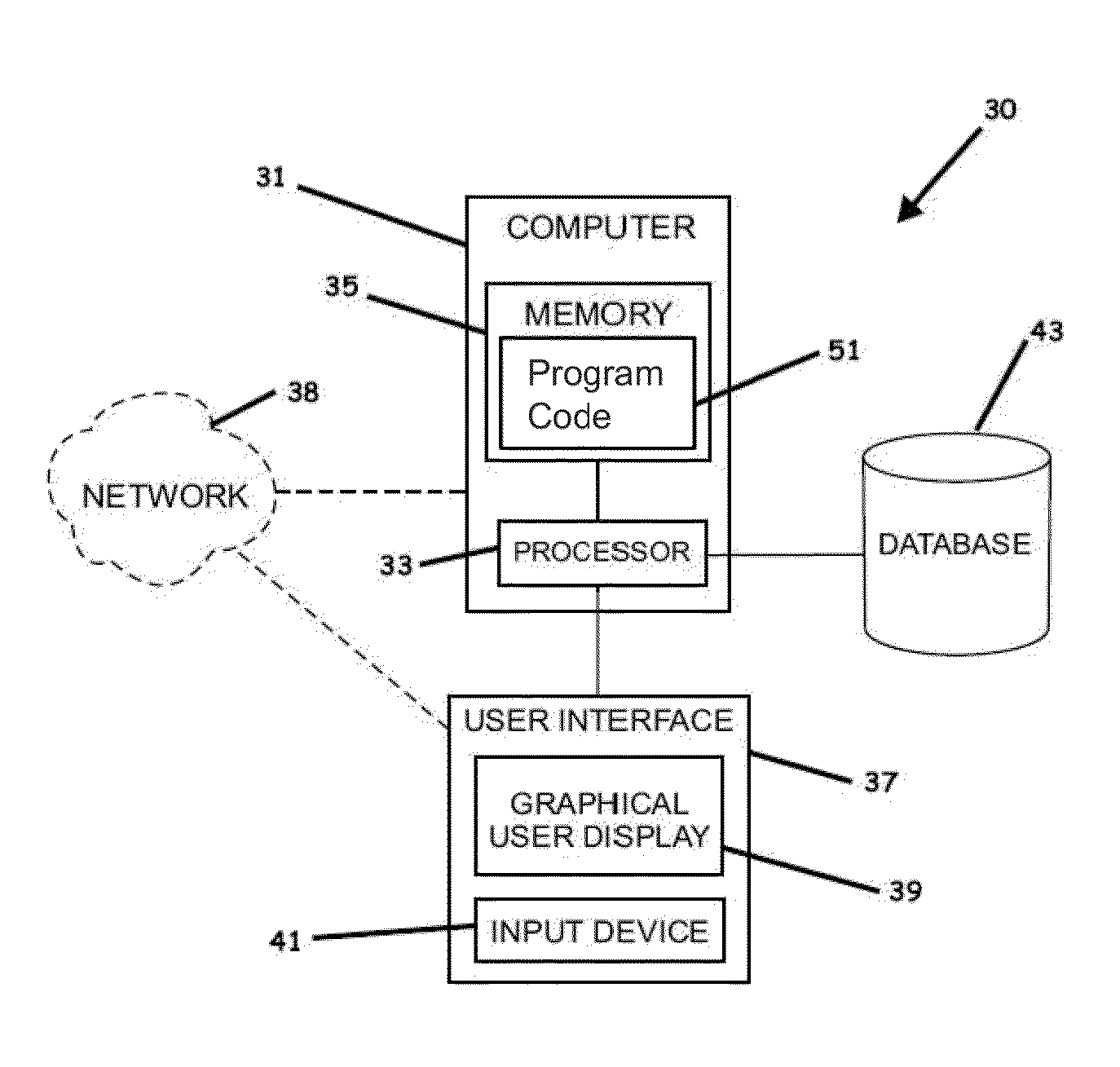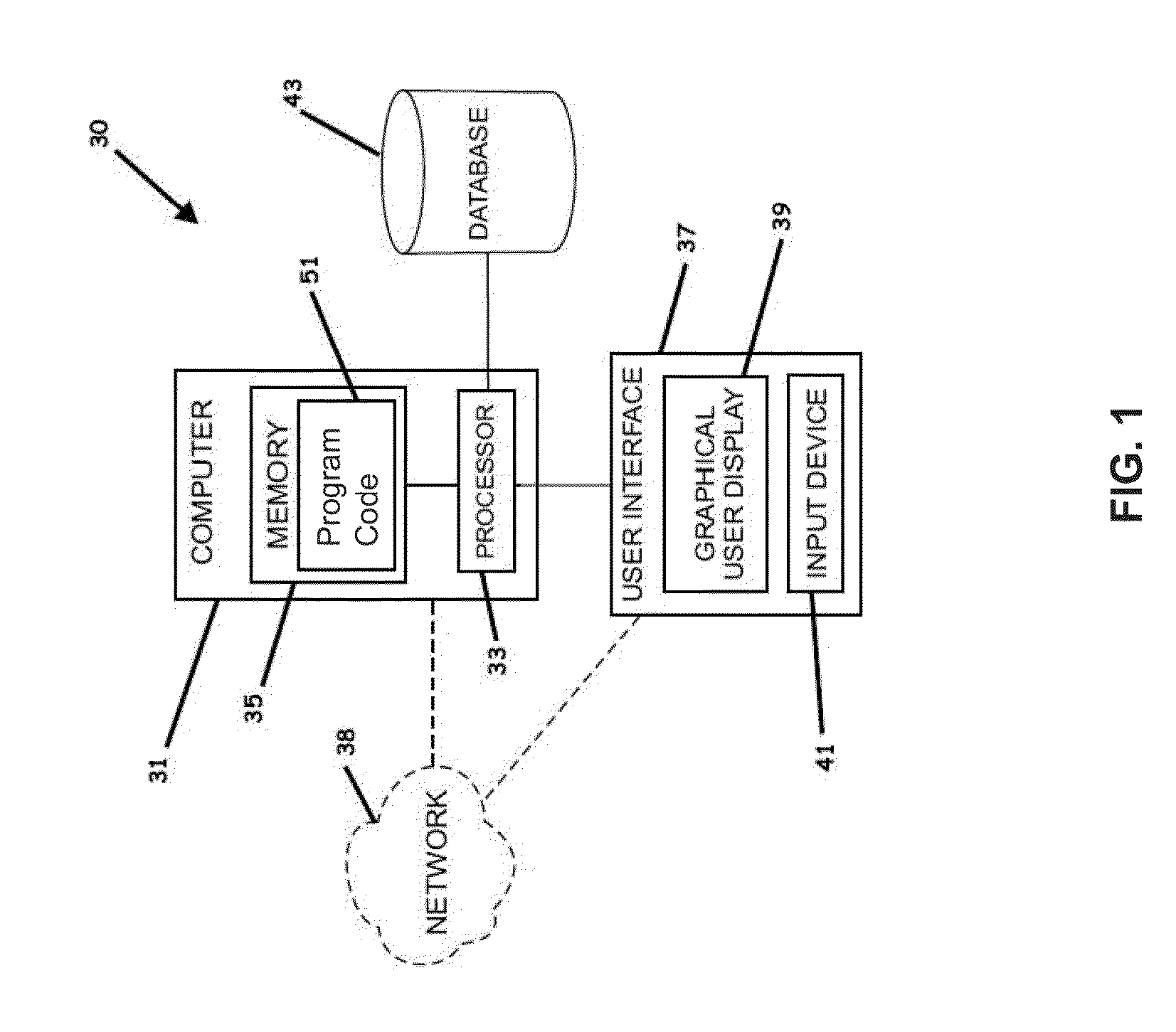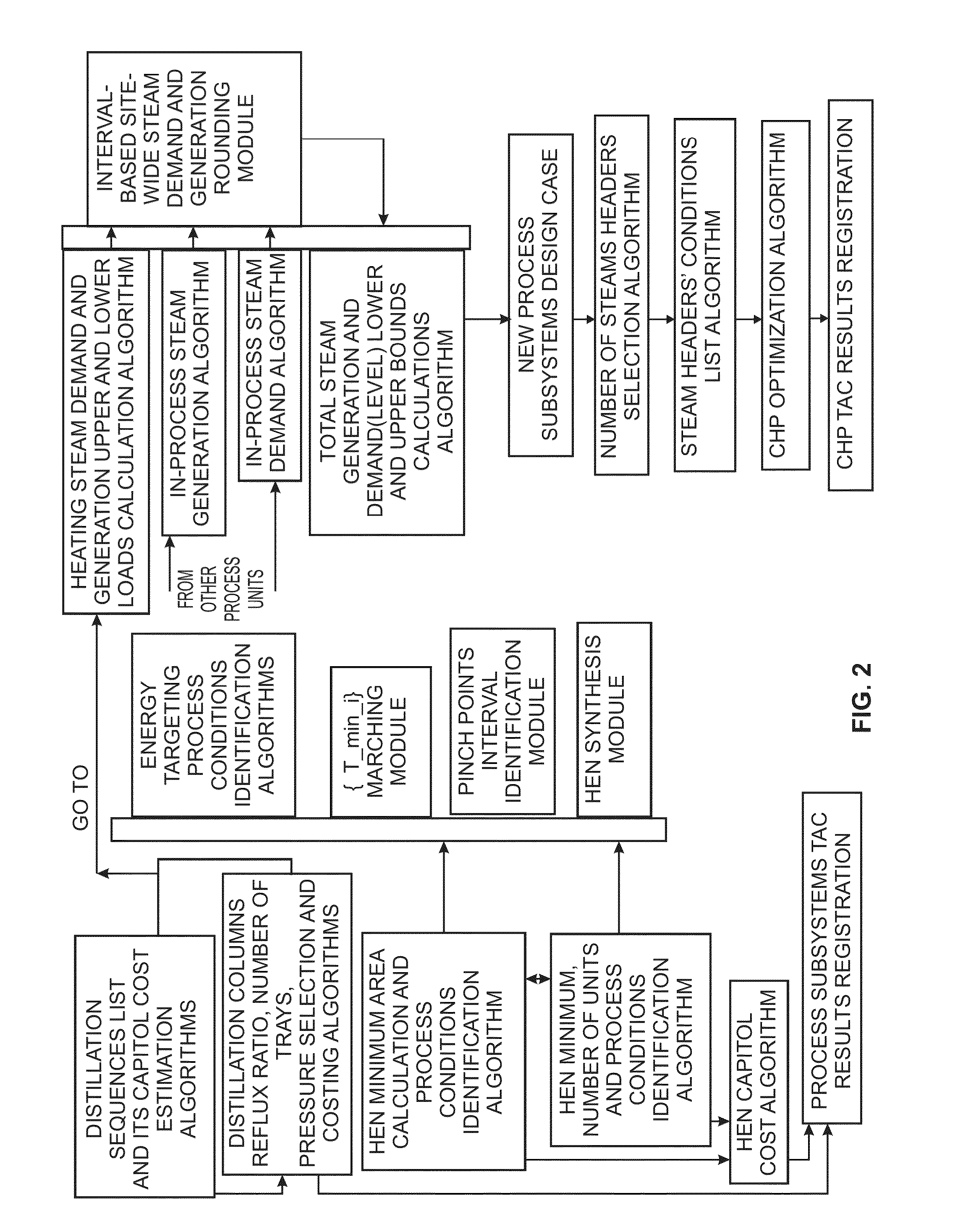Methods For Simultaneous Process and Utility Systems Synthesis in Partially and Fully Decentralized Environments
a technology of process and utility system, applied in the field of energy management system, can solve problems such as current approaches
- Summary
- Abstract
- Description
- Claims
- Application Information
AI Technical Summary
Benefits of technology
Problems solved by technology
Method used
Image
Examples
case i
[0082] Process Subsystems are the Leader and Utility Subsystem is the Follower
[0083]If the CHP USTAC is much less in dollar value compared to the PSTAC, the process subsystems become the problem objective leader and the CHP becomes the problem objective follower. According to the solution approach to this problem, the process designer solves the problem to his / her best interest first and dictates to the follower to find his / her best objective under his / her superstructure constraints and the decision variables, obtained from the process designer problem solution, given to him / her by the process subsystems designer. These constraints and decision variables include steam demand and generation levels and operating conditions and an ad hoc selection of process equipment drivers, such as turbines and / or motors, for pumps and compressors. This class of problem is currently implemented, at least to some extent, in CHP utility subsystem synthesis in both academia and industry.
case ii
[0084] Process Subsystems are the Follower and Utility Subsystem is the Leader
[0085]If the PSTAC is much less in dollar value compared to the CHP USTAC, the CHP becomes the problem objective leader and the process subsystems become the problem of objective follower. According to this solution, the process designer initially provides a broad set of constraints which the utility system designer utilizes to formulate its optimal solution. The output parameters regarding steam and power are then provided back to the process system designer to be utilized in designing its optimal solution given the utility system constraints.
case iii
[0086] Tie Cooperating Approach Between Process and Utility Subsystems
[0087]If the PSTAC and the CHP USTAC are similar in costs, a Pareto-type diagram can be established to analyze the cheapest distillation sequence and heat exchange network versus CHP costs using a simple iteration between departments. A Pareto-type diagram for company-wide best decision-making can be employed using {ΔT_min_i} as a marching variable. An example of such a marching technique is described, for example, in U.S. Pat. No. 8,032,262.
[0088]Method for Totally Decentralized Application
[0089]In such category; the syntheses tasks of both the process subsystems and utility subsystem (CHP) can be conducted in a fully decentralized fashion. For example, in a typical scenario, we have two companies working on a project in which one company's objective is to synthesize the process plant (e.g., chemical complex) and the other company's objective is to synthesize a utility plant (CHP) to serve it. The utility plant s...
PUM
 Login to View More
Login to View More Abstract
Description
Claims
Application Information
 Login to View More
Login to View More - R&D
- Intellectual Property
- Life Sciences
- Materials
- Tech Scout
- Unparalleled Data Quality
- Higher Quality Content
- 60% Fewer Hallucinations
Browse by: Latest US Patents, China's latest patents, Technical Efficacy Thesaurus, Application Domain, Technology Topic, Popular Technical Reports.
© 2025 PatSnap. All rights reserved.Legal|Privacy policy|Modern Slavery Act Transparency Statement|Sitemap|About US| Contact US: help@patsnap.com



